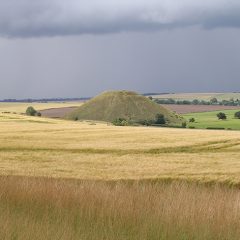Hello Robin,
I thoroughly enjoyed Temple in the Hills, and many others will enjoy it also. Your excellent surveys are really the key to convincing archaeologists of the broad scope of ancient science and knowledge. I have attached a short review and do firmly believe that we should encourage students to follow your footsteps in metrological surveys so that more people may convince themselves of these essential sciences.
Best Regards and Thank you again for your inspirational book!
TKD
Thomas Karl Dietrich is the author of Temple of Heaven & Earth, Culture of Astronomy, and Origin of Culture. websites: cosmomyth.com and donohoememorials.com
Here is his review:
REVIEW
TEMPLE IN THE HILLS, The Discovery of the Original Stonehenge by Robin Heath
The introduction to Temple in the Hills by Robin Heath traces olden traditions and modern movements concerning the bluestone circle at Stonehenge, Zodiac hunters, New Age celebrities such as John Michell and Alexander Thom. The main corpus is dedicated to a review of astronomical phenomena and especially Heath’s discovery of the ‘Lunation Triangle’ within the context of ’the 30-segment, marked rope & peg’ configuration producing the 5-12-13 triangle which numerically defines the Moon’s relationship with Sun and Earth. Heath also gives a basic primer upon how to construct an accurate Equilateral Triangle on the landscape; again by simple rope & peg implements, showing that detailed, large-scale surveys may be achieved with very simple tools –proving that complex constructs were well within the abilities of our Stone-Age ancestors.
Robin Heath brings a solid case of evidence in favor of Neolithic metrology into the courtroom of archaeology. The evidence turns upon his measurements and discovery of ‘the Preseli Wheel’, centered upon the 500 foot diameter henge at Castell Mawr. Heath delineates five spokes of this wheel: Llech Drybedd, Carningli Summit, Foel Feddan, Carn Menyn, and Foel Drygarn which each average 18,630 feet (3.52 miles) upon the Preseli circle. The evidence of this wonderful precision is an indictment of modern archaeology’s continuing neglect to embrace and acknowledge metrological data and refined astronomical alignments. Heath returns to one of his 2010 investigations of his survey of the Preseli Vesica showing the distances between five locations upon a diamond pattern of two base-to-base equilateral triangles. The length of the common base and the sides of these two equilateral triangles show a nearly equal length and a mean distance of 11,759.0 feet demonstrating; in the author’s own words, “An accuracy that showed it to be a surveyed structure.”
Heath’s detailed demonstration of these irrefutable similar dimensions at the Preseli Wheel and Preseli Vesica represents no small contribution to science –because every well-documented opus elevates and substantiates the case for large-scale Neolithic metrology, precision alignments, as well as the broad based canons and traditions involving cycles, numbers, and geometry. It is absolutely important to celebrate this achievement for what it has and will accomplish. But, rather than bemoan the slow acceptance of new scientific data, I am quite sure that colleges and universities would take up such an interesting project for their students to gain valuable expertise in metrology; namely, to confirm Robin Heath’s survey measurements. This would once and for all guarantee the acceptance of accurate large-scale metrology in the Neolithic period and ignite a fire under the dragging feet and torsos of the archaeologists.
In his conclusion, Robin Heath presents the initial stages of his paramount discovery that the Aubrey Circle and the Sarsen Circle of Stonehenge bear the same relationship to one another as do the Preseli Wheel and its central circle around Pentre Ifan and Eglwyswrw. This correspondence shows that Stonehenge was based upon the template of the Preseli Wheel in Wales dated between 3200-3800 BC. Heath notices that genetic biologists conclude that the brain capacity of humankind has been more or less the same for almost 200,000 years. TKD
To purchase a copy of this book, full details are found in this category (Books) of the website.
